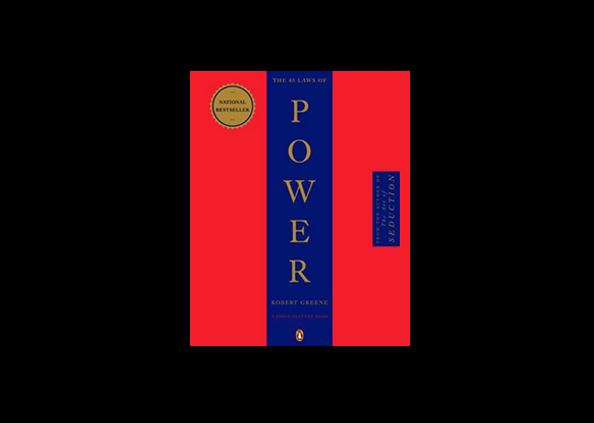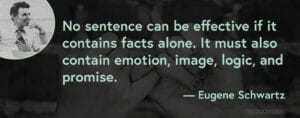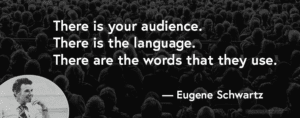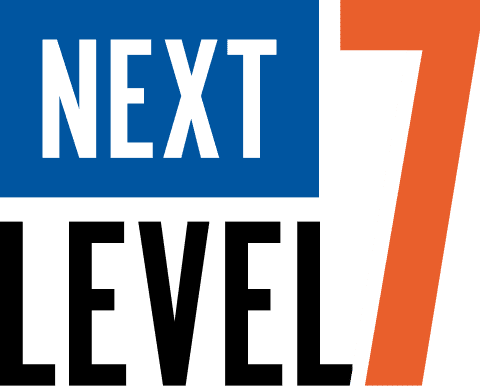Real Artists Don’t Starve by Jeff Goins Review
10/10 would read again.
This book, plus Overlap by Sean McCabe, are the two books I recommend anyone start with who are beginning to make path of their own.
Although “artists” is in the title, this really applies to anyone who wants to be an entrepreneur and start their own business.
Real Artists Don’t Starve Notes by Chapter
These are not just “Cliff’s notes” style.
I include my own thoughts and examples of how I’m applying it to my life.
Introduction – The Myth of the Starving Artist
Jeff Goins starts off talking about how Michelangelo, the artist known for painting the Sistine Chapel, was actually wealthy.
He was worth what would be about $47 million today.
That’s the top 1%, right?
I believed in the Myth of the Starving Artist
I’ve wanted to be a musician since I was very young, it was kind of my first love, I guess.
And people always told me to have a fallback because they believed the Starving Artist Myth.
So I didn’t pursue that as a career path because everybody told me there was no way to be a musician successfully.
I didn’t even really practice guitar that much because, to me, it was just a silly hobby.
Then when I was 17 or 18, I started my first “media company.”
I want to put media and company in quotes together and separately because it wasn’t really officially a company, and media is sort of an ambiguous term.
But this was when I was 17 or 18, and I was taking photos and doing some graphic design and web design for local bands.
What does it mean to be a real artist?
Goins says, “it means we spend our time working on what matters most to us and that we don’t need anyone’s permission to create. “
That’s the life that I want. And that’s the life that I am building with No Alarms Club.
Thriving Artists in the New Renaissance
Goins uses the terms, “New Renaissance” and “Thriving Artists” to define and describe what we are working to achieve here.
So he has 12 rules that we should live by.
I hope he doesn’t mind giving this part of the book away.
I do highly recommend you purchase this book and read it yourself. It’s fantastic.
So the 12 principles every Thriving Artist lives by, or the New Renaissance as he calls them.
- The starving artist believes you must be born an artist. The thriving artist knows you must become one.
- The starving artist strives to be original. The thriving artist steals from his influences.
- The starving artist believes he or she has enough talent, the thriving artist apprentices under a master.
- The starving artist is stubborn about everything. The thriving artist is stubborn about the right things.
- The starving artist waits to be noticed. The thriving artist cultivates patrons.
- The starving artist believes they can be creative anywhere. The thriving artist goes where creative work is already happening.
- The starving artist always works alone. The thriving artist collaborates with others.
- The starving artist does his work in private, the thriving artist practices in public.
- The starving artist works for free. The thriving artist always works for something.
- The starving artist sells out too soon. The thriving artist owns their work.
- The starving artist masters one craft. The thriving artist masters many.
- The starving artist despises the need for money. The thriving artist makes money to make art.
I wrote some notes down on each one of these.
The first one, the starving artist believes you must be born an artist. The thriving artist knows you must become one.
This is definitely true. You can practice and learn pretty much any skill.
I definitely don’t think I was born with any skills.
I’ve had friends throughout my life that seemed to have been born with innate skills.
When I was in elementary school, I had a friend named Charles, who was very good at drawing.
And I know he practiced a lot, but he also seemed to have some sort of innate skill that he was born with.
Another friend of mine, from high school, Adam, is a fantastic musician, and I know he also practiced a lot. Still, it just seemed like he grasped the concept so much easier than I ever did.
There are definitely things that now, in my thirties, I feel like I am good at, but I don’t feel like there was anything I was born good at. These are all things that I have practiced.
Particularly writing. Writing, I think, is my strongest skill.
I’m also really good with people.
Under the second principle, the starving artist strives to be original. The thriving artist steals from his influences.
I don’t really have anything written down much for this.
I definitely am going to need to read this chapter to understand it more.
I did write down that this reminds me, I should read Austin Kleon’s books.
He wrote a book called Steal Like An Artist.
As well as some other books within that realm of knowledge.
Number three, the starving artist believes he has enough talent. The thriving artist apprentices under a master.
This is kind of terrifying to me. Finding a mentor is tough.
So I’m looking forward to reading this chapter, and I hope that Goins explains a comfortable way to do this.
Four, the starving artist is stubborn about everything. The thriving artist is stubborn about the right things.
I’m interested in learning more about the right and wrong things to be stubborn because I am concerned that I perhaps am stubborn about the wrong things instead of the right things.
So I’m looking forward to that chapter as well.
Five, the starving artist waits to be noticed. The thriving artist cultivates patrons.
I am betting that this has something to do with social media.
And we will find out when we get there.
Six, the starving artist believes he can be creative anywhere. The thriving artist goes where creative work is already happening.
I’m hoping that this doesn’t mean I have to move because I actually like where I live.
Number seven, the starving artist always works alone. The thriving artist collaborates with others.
Collaboration is great, but I often have trouble finding like-minded people.
I think that some of that might be that I am too much of a control freak when it comes to my art and things that I create.
Maybe I should just start collaborating with anybody I can, only to expose myself to different art.
So that chapter should help me quite a bit.
Eight, the starving artist does his work in private. The thriving artist practices in public.
I also feel like this might be about using social media.
But I guess we’ll see when we get there.
Number nine, the starving artist works for free. The thriving artist always works for something.
I guess we’ll find out when we get there, what something means, but one thing that I live by is: never work for free and don’t work for exposure because that’s kind of a BS thing.
10, the starving artist sells out too soon. The thriving artist owns his work.
I’m hoping that this has something to do with licensing.
Licensing art is something that’s always been fascinating to me.
I first learned about it in high school.
A band that I listened to, Mindless Self Indulgence, instead of signing to a record label, license their music to record labels.
They still own the music but had the marketing power of a record label behind them.
They went on to be quite successful.
11, the starving artist masters one craft. The thriving artist masters many.
This really speaks to me as someone who enjoys creating art through many different mediums.
I like making music. I love working with video. I like working with graphics. I like recording podcasts. I like writing.
I love writing. It’s my second love after music.
As someone who is always craving to create new things through many different mediums, I’m hoping that this chapter 11 reinforces what I feel deep inside about wanting to just create across as many different mediums as I possibly can.
And number 12, the starving artist despises the need for money. The thriving artist makes money to make art.
This one will require a bit of a mindset shift for me.
I kind of despise the need for money, and I generally have lost faith in people to maintain sustainable capitalism.
I’m not against capitalism necessarily. I just feel that what is sustainable capitalism is not where America is headed.
I’m concerned that we are drifting further and further from a sustainable economy in America and more towards a greed-based economy that is just not going to work out.
And because of that, we’re going to end up in a situation where nobody’s happy.
But I’ll leave the economics, politics, and social issues to a different podcast.
I want to end this chapter with one more thing.
Jeff Goins says being a starving artist is a choice. And I do believe that.
In my over a decade of experience working on the internet, specifically at marketing, I have come to the conclusion that you can pretty much make money with almost anything on the internet.
Chapter 1 – You Aren’t Born An Artist
This book is split into three sections, and the first section of the book is about mindset.
From Baseball to Writing
This chapter starts with a story about a major league baseball player, Adrian Cardinez. He played for the Phillies, and then the Chicago Cubs.
I don’t really know much about baseball.
I’m not a big baseball fan, but the story is interesting nonetheless.
He was really good at baseball as a kid and a teenager and was drafted right out of high school.
When he signed to the Cubs, he had a high player salary and a signing bonus of almost a million dollars, but he was not happy.
He found that he wasn’t like the other players.
For example, while his fellow players were out partying, he read Tolstoy. He played piano for his friends in small intimate settings.
Within a year of being signed to the major league, he left to pursue a career in writing.
A form of art that he truly loved.
So far, this chapter is really speaking to me.
It’s okay to reinvent who we are.
I spent over the last decade working in internet marketing through various industries. And I don’t really want to do it anymore.
I don’t mind marketing my own stuff, and I don’t mind helping other people learn to do their own marketing.
Still, I don’t want to do marketing for other people or other companies anymore.
I just don’t find joy in that anymore.
To help with that, I created the No Alarms Club podcast.
It started off as a podcast where I go through books and share my experience learning from them.
Now, I’m considering adding a repository of all of my marketing knowledge and experience.
I’d put all of it into one website. I’d update it as I think of new things to add.
I’d also add some checklists and step-by-step stuff so that you can just kind of follow the list.
It indeed would be all of my knowledge and experience put into one repository.
I will work on it as long as it takes for me to get everything out of my head and written down for others to use.
I also believe that it is my ticket to a No Alarms Club lifestyle.
But eventually, I’d like to have someone else handling that and just sit back and create art of various kinds.
In the last chapter, I discussed how, in chapter 11, we are going to be considering creating art through many different mediums.
And that is something that I really look forward to spending my time doing.
But that’s quite a few episodes away.
In this chapter, Goins says, “we aren’t born an artist. We become one.”
He calls this the Rule of Re-Creation.
Goins says it’s okay for us to “change the script” that we live and pursue something else.
That’s where I’m at right now.
I currently have a day job.
I work for a nonprofit trade association called the American Institute of Building Design.
I do enjoy the job.
I like all of the people that I work with.
I like interacting with our members, and I love going to the events and especially our new online activities.
I have a lot of fun with that.
But I’m ready for something new.
I want total freedom and passive income.
The next part of this chapter talks about becoming an artist.
People believe we are either born with artistic talent or not.
Some people seem to be. But the truth is any of us can learn it.
I also mentioned this in the last episode.
I had a friend in elementary school named Charles, who was really fantastic at drawing.
To this day, I believe he was born with some level of artistic talent. But I also know that he practiced a lot.
Then in high school, a good friend of mine named Adam is fantastic at music, and he also seemed to be born with it, but I know that he practiced a lot as well.
It takes hard work and dedication for most of us to become good at something.
I was not born with any particular artistic talent.
But I was born with a drive to create.
I enjoyed writing and drawing a lot as a kid, as well as music.
But because I was taught and myself believed the myth of the starving artist, I didn’t pursue any artistic trades.
For the most part, my family and everyone else I knew told me that it was nearly impossible to succeed as an artist.
I ended up going into internet marketing for more than a decade of my adult life, which is where I am now.
I started a company a couple of years ago called Approaching Utopia.
It has many incarnations, but the current idea is that it’s a media company producing ebooks, videos, and more based on technology’s ethics.
Obviously, I can’t do all the different types of media myself, and that’s fine. I don’t need to.
But starting out, I need at least something to offer.
There is one podcast, Your Secure Life, that I need to get back to.
The idea is to monetize that podcast by releasing a yearly book of privacy and cybersecurity tips for the average person.
I’ve been working on a couple podcasts for over a year now.
I’ve worked on several other podcasts in the past, which no longer exist.
I still have quite a bit of learning about podcasting, but that’s the nature of any artistic endeavor.
There’s always going to be something new to learn and something to improve.
Also, I just love podcasting.
I’ve also picked up books and online courses about web design and development, branding, UX, and UI, graphic design, photography, and video work throughout my adult life.
I don’t need to be an expert nor even really that good at all of these.
Still, if I’m running a media company, it’s important to me that I know enough.
When I hire someone to handle each of those tasks, I want to understand what they’re doing, why they’re doing it, what they’re saying when describing things to me, and so on.
It’s vital to me not to be “that CEO” who doesn’t know what the heck my hired creatives are talking about and doing.
I also want to be able to contribute if a project needs it.
There’s a picture online that I like. I’ll post it at NoAlarmsClub.com/2.
And to describe it basically, there are two parts.
There is a picture of a few people pulling a desk with a guy sitting on top of the desk, pointing forward.
That one is captioned “boss.”
Underneath that is a picture of all of those same people pulling the desk.
Instead of the guy on top of the desk, he’s in front pulling with them.
That one is captioned “leader.”
That’s who I want to be.
I want to sit down when necessary and help any of my creatives finish projects for our clients.
From Marketing to Writing
Goins tells a story in this chapter that is really relatable for me. It’s very familiar.
Goins says he worked as a marketing director for a nonprofit when he decided he didn’t want to work in marketing anymore.
That’s almost exactly my story.
He says he started calling himself a writer, which was the next path he wanted to take with his life.
So, what do I call myself?
What is the next path that I want to take?
I need to figure this out.
But again, that’s what all this is about, right?
It’s going to get me there.
An Introduction to Overlapping
Next, Goins tells a story about John Grisham, who is a well known legal thriller author.
I think I’ve read at least one of his books.
He wrote his first book one page per day before starting his day job.
He had a wife and a newborn child.
It would have been reckless to just quit his day job and start writing.
So he wrote in the mornings before he went to work.
There is an online entrepreneur I follow named Sean McCabe. He wrote this excellent book called Overlap.
That is the next book we’re going to cover on the No Alarms Club podcast after we finish Real Artists Don’t Starve.
This is something he calls Overlapping, which is when you have a day job but are working on what he calls your Overlap. It’s Overlapping specifically when you intend to move into that professionally.
Back to Real Artists Don’t Starve, Goins says, “we don’t fake it til we make it. We believe it until we become it.”
Working on something little bits every day may seem small and insignificant, but it really does add up.
And it’s better to spend a few minutes here and there than to wait for time to sit down and do, for example, a whole hour.
Overlapping leads to success.
A study at the University of Wisconsin found that entrepreneurs who kept their day jobs and overlapped were more successful.
Those that quit their jobs to go all-in were 33% more likely to fail.
I don’t want to fail. I don’t think most people want to fail.
I’d like to get any bit of help that I can because all of that help adds up.
If people who Overlap are more successful, then I’m going to Overlap.
Write your own job title.
The next story in this chapter talks about a guy who worked at Hallmark, the greeting cards company.
He sort of created his own department and job title, doing precisely what he wanted to do rather than necessarily what he was hired to do.
I’ve been sort of doing this slowly at my day job.
My current title is Communications Director.
With my desire to work more on media, especially in podcasts and online courses, a more apt title would be Education Director.
I do have responsibilities in communications.
Most of what I work on these days is videos and audio podcasts and stuff like that.
Particularly our online education.
This is allowing me to do more of what I enjoy while at my day job.
It’s also allowing me to get paid to learn and practice and improve my skills that will be important for my media company Approaching Utopia.







